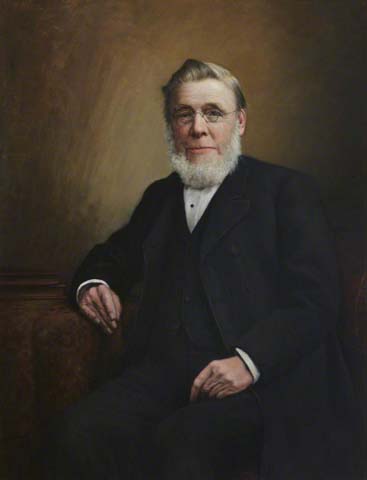


 تاريخ الرياضيات
تاريخ الرياضيات
 الرياضيات في الحضارات المختلفة
الرياضيات في الحضارات المختلفة 
 الرياضيات المتقطعة
الرياضيات المتقطعة
 الجبر
الجبر
 الهندسة
الهندسة 
 المعادلات التفاضلية و التكاملية
المعادلات التفاضلية و التكاملية 
 التحليل
التحليل
 علماء الرياضيات
علماء الرياضيات |
Read More
Date: 26-10-2016
Date: 30-10-2016
Date: 5-11-2016
|
Died: 23 December 1890

Edward Sang, mathematician, engineer and actuary, was the 6th of 11 children of Edward Sang (1771-1862), nurseryman and sometime Provost of Kirkcaldy, and his wife Jean Nicol (b.1773) a relative of William Nicol (b.1770) who invented the Nicol prism. He attended a subscription school, founded by his father and others, under a gifted headmaster Edward Irving. At Edinburgh University during 1818 - 1824, he impressed professors William Wallace and John Leslie in mathematics and natural philosophy, despite periods of illness. Small for his age, he was first mocked by fellow-students, then admired for his precocious talent.
Sang first worked in Edinburgh as surveyor, civil engineer and mathematics teacher and lectured on natural philosophy. During 1841-43 he was Professor of Mechanical Sciences at the nonconformist Manchester New College, then went to Constantinople to establish engineering schools, plan railways and an ironworks. He lectured (in Turkish) at the Imperial School, Muhendis-hana Berii and gained fame by predicting the solar eclipse of 1847, thereby dispelling superstition. He resigned against the Sultan's wishes, returning to Edinburgh in 1854 to teach mathematics.
An active Fellow of the Royal Scottish Society of Arts and the Royal Society of Edinburgh, he received awards from both and from the Institution of Civil Engineers, London (1879). He was a founder member and first official lecturer of the Faculty of Actuaries in Scotland, a corresponding member of the Royal Tunis Academy, an Ll.D. of Edinburgh University and an honorary member of the Franklin Institute, Philadelphia. He married Isabella Elmslie in 1832 and had at least three daughters and at least one son.
Mainly in Edinburgh-based journals, Sang wrote extensively on mathematical, mechanical, optical and actuHelvetica topics including vibration of wires, a theory of toothed wheels, an improved lighthouse light, railways, bridges, manufacturing and life insurance. He published actuHelvetica, annuity and astronomical tables, books on Elementary and Higher Arithmetic and much-used tables of 7-place logarithms (1871). But his most remarkable achievement is his massive unpublished compilation of 26- and 15-place logarithmic, trigonometric and astronomical tables, filling 47 manuscript volumes. Compiled over forty years, latterly with assistance from two daughters Flora and Jane, these perhaps surpass in accuracy the (also unpublished) French 'Cadastre' tables of 1801. They were gifted to the nation in 1907 by Anna and Flora Sang.
Books:
Articles:



|
|
|
|
دراسة تحدد أفضل 4 وجبات صحية.. وأخطرها
|
|
|
|
|
|
|
جامعة الكفيل تحتفي بذكرى ولادة الإمام محمد الجواد (عليه السلام)
|
|
|